Visit Two - What Is Happening Today
Did you know? - Wine tasting (often, in wine circles, simply tasting) is the sensory examination and evaluation of wine. While the practice of wine tasting is as ancient as its production, a more formalized methodology has slowly become established from the 14th century onwards. Modern, professional wine tasters (such as sommeliers or buyers for retailers) use a constantly-evolving formal terminology which is used to describe the range of perceived flavors, aromas and general characteristics of a wine. More informal, recreational tasting may use similar terminology, usually involving a much less analytical process for a more general, personal appreciation.
We Are Adults So We Started With Dessert

Notice the mirrors on the top and the sides of the stage
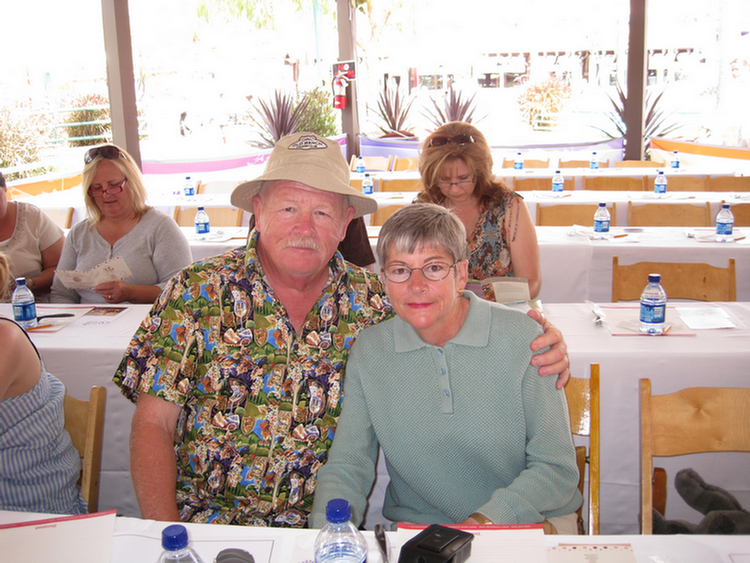
We are in our food and wine uniforms!

Sweet Cheeks Bakery Presentation... Donna and Elaine
They are an accomplished pair of folks who have years and years of experience even though they look to be in their 20's. Visit their site .
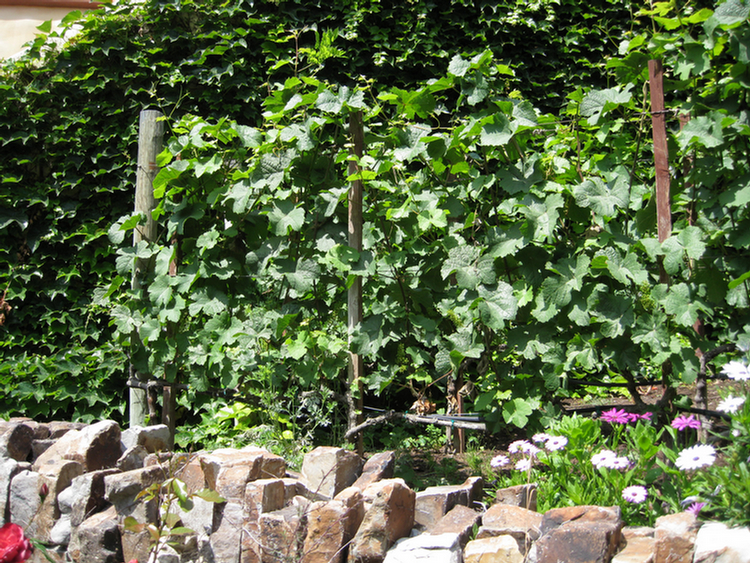
The grapes in the winery were in full growth
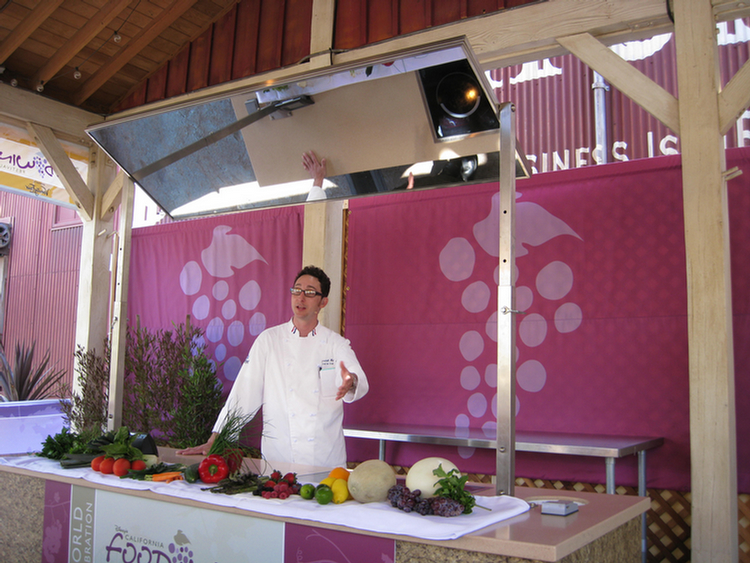
We got a discussion of vegetables in the garden
Tasting The Grapes
The results of the four recognized stages to wine tasting:
- appearance
- "in glass" the aroma of the wine
- "in mouth" sensations
- "finish" (aftertaste)
are combined in order to establish the following properties of a wine:
- complexity and character
- potential (suitability for aging or drinking)
- possible faults
A wine's overall quality assessment, based on this examination, follows further careful description and comparison with recognized standards, both with respect to other wines in its price range and according to known factors pertaining to the region or vintage; if it is typical of the region or diverges in style; if it uses certain wine-making techniques, such as barrel fermentation or malolactic fermentation, or any other remarkable or unusual characteristics.

Time for a wine tasting.. Elizabeth is amazing and does a fantastic job

We walked the wine tour trying four wines from South America, New Zealand, Italy,
and France
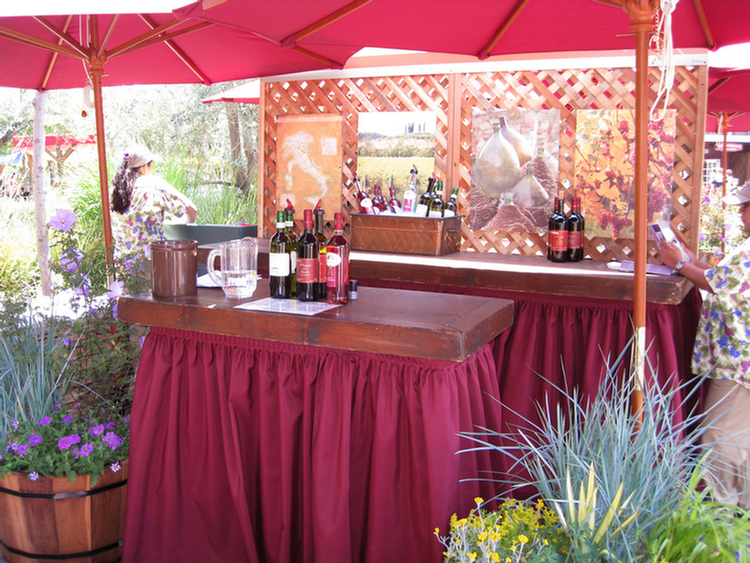

We never had rice and beans like this... Brazilian foods on display
Did you know? - The cuisine of Brazil, like Brazil itself, varies greatly by region. This diversity reflects the country's mix of native Amerindians, Portuguese, Africans, Italians, Spaniards, Germans, Poles, Syrians, Lebanese and Japanese among others which has created a national cooking style marked by the preservation of regional differences. The national dish of Brazil is whole feijoada - a meat and bean stew, akin to the French cassoulet. Rice and beans is an extremely popular dish, considered basic at table; a tradition Brazil shares with several Caribbean nations.

We were treated to beautiful flowers while waiting in line for the next wine
tasting event
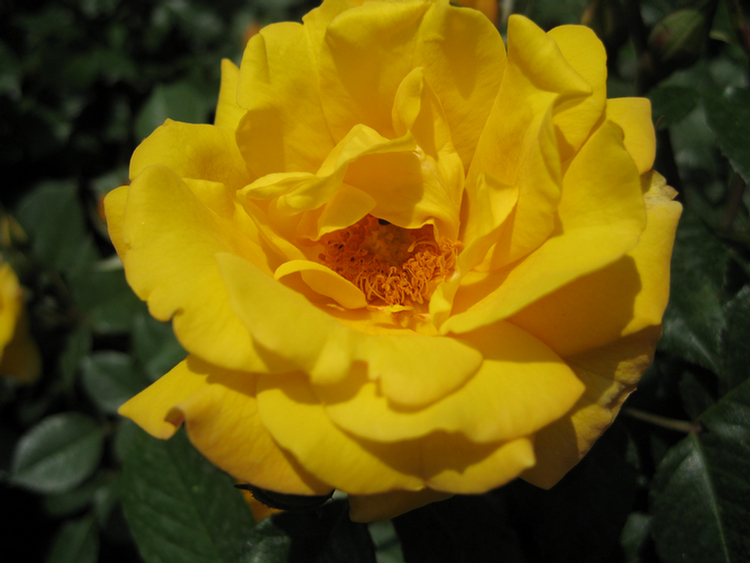

Sue's favorite... Sparkling wines
Did you know? - Sparkling wine is a wine with significant levels of carbon dioxide in it making it fizzy. The carbon dioxide may result from natural fermentation, (either in a bottle, as with the méthode champenoise, or in a large tank designed to withstand the pressures involved, as in the Charmat process) or as a result of carbon dioxide injection.
Effervescence has been observed in wine throughout history and has been noted by Ancient Greek and Roman writers but the causes of this mysterious appearance of bubbles was not understood. Over time it has been attributed to phases of the moon as well as both good and evil spirits. The tendency of still wine from the Champagne region to lightly sparkle was noted in the Middle Ages but this was considered a wine fault and was disdained in early Champagne winemaking.
Dom Pérignon was originally charged by his superiors at the Abbey of Hautvillers to get rid of the bubbles since the pressure in the bottles caused many of them to burst in the cellar. Later, when deliberate sparkling wine production increased in the early 1700s, cellar workers would still have to wear heavy iron mask that resembled a baseball catcher's mask to prevent injury from spontaneously bursting bottles.
The disturbance caused by one bottle's disintegration could cause a chain reaction, with it being routine for cellars to lose 20-90% of their bottles to instability. The mysterious circumstance surrounding the then unknown process of fermentation and carbonic gas caused some critics to call the sparkling creations "The Devil's Wine".
The English were one of the first who saw the tendency of Champagne to sparkle as a desirable trait and tried to understand why it did bubble. Wine was often transported to England in wooden wine barrels where merchant houses would then bottle the wine for sale. During the 17th century, English glass production used coal-fueled ovens and produced stronger, more durable glass bottles than the wood-fired French glass.
The English also rediscovered the use of cork stoppers, once used by the Romans but forgotten for centuries after the fall of the Roman empire. During the cold winters of the Champagne region, temperatures would drop so low that the bottles would freeze.
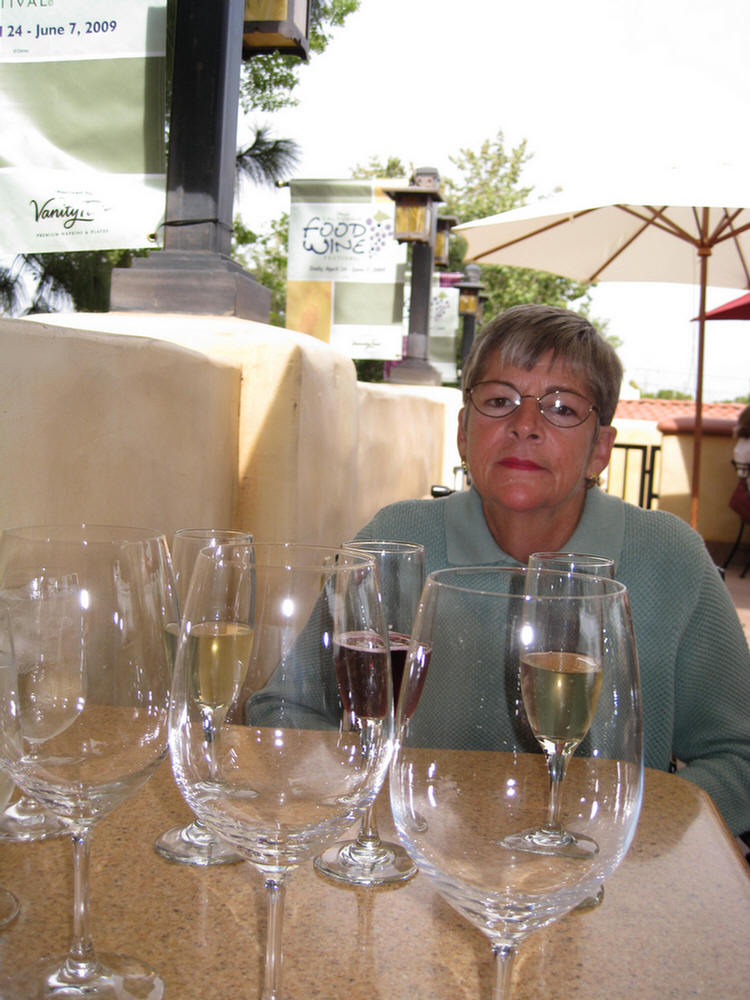
No, these were not all full!!
Did you know? - Whereas wines are regularly tasted in isolation, a wine's quality assessment is more objective when performed alongside several other wines, in what are known as tasting "flights". Wines may be deliberately selected for their vintage ("horizontal" tasting) or proceed from a single winery ("vertical" tasting), to better compare vineyard and vintages, respectively. Alternatively, in order to promote an unbiased analysis, bottles and even glasses may be disguised in a "blind" tasting, to rule out any prejudicial awareness of either vintage or winery. Whereas wines are regularly tasted in isolation, a wine's quality assessment is more objective when performed alongside several other wines, in what are known as tasting "flights". Wines may be deliberately selected for their vintage ("horizontal" tasting) or proceed from a single winery ("vertical" tasting), to better compare vineyard and vintages, respectively. Alternatively, in order to promote an unbiased analysis, bottles and even glasses may be disguised in a "blind" tasting, to rule out any prejudicial awareness of either vintage or winery.
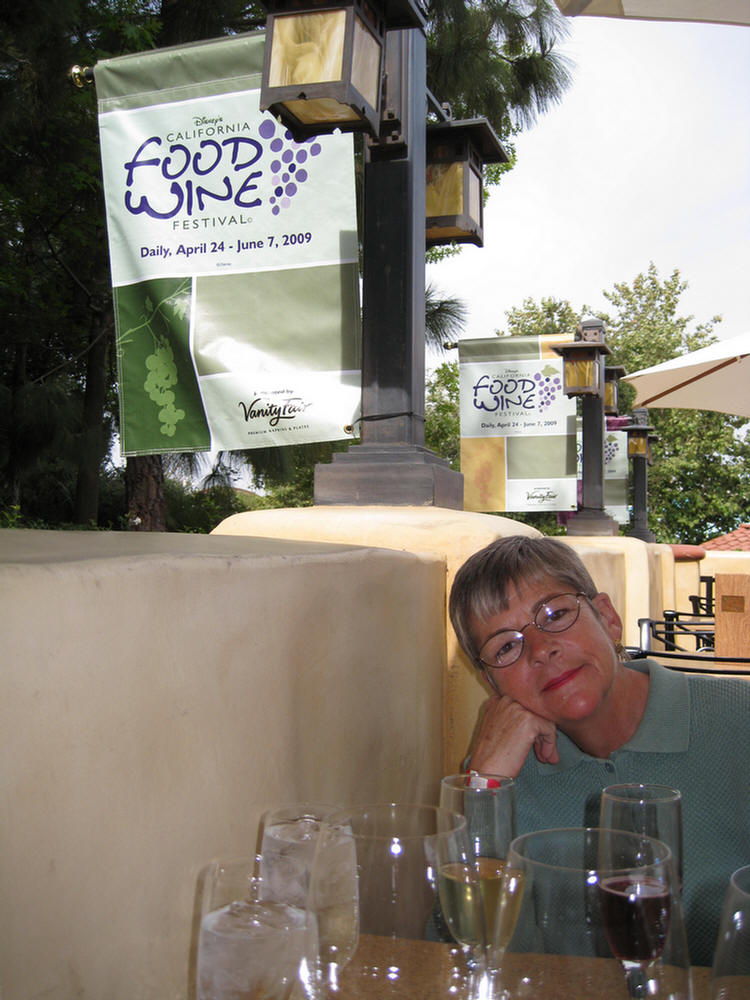
A super afternoon!
One Must Try Cheese With Wine... Especially Red Wines
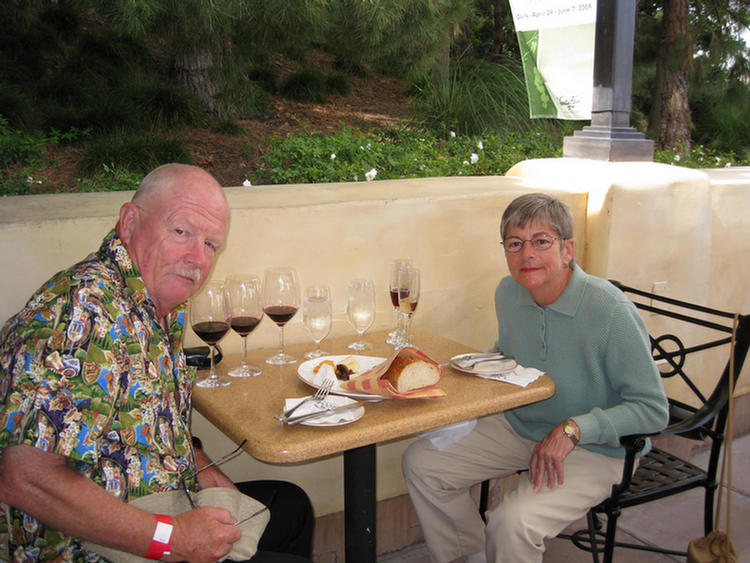
Paul drank the reds and Sue did additional sparkling wines (These are the pour
sizes we get when tasting)
Did you know? - Cheese is a food consisting of proteins and fat from milk, usually the milk of cows, buffalo, goats, or sheep. It is produced by coagulation of the milk protein casein. Typically, the milk is acidified and addition of the rennet causes coagulation. The solids are then separated and pressed into final form. Some cheeses also contain molds, either on the outer rind or throughout.
Hundreds of types of cheese are produced. Their different styles, textures and flavors depend on the origin of the milk (including the animal's diet), whether it has been pasteurized, butterfat content, the species of bacteria and mold, and the processing including the length of aging. Herbs, spices, or wood smoke may be used as flavoring agents. The yellow to red color of many cheeses is a result of adding annatto. Cheeses are eaten both on their own and cooked in various dishes; most cheeses melt when heated. The fermentation process was prematurely halted--leaving some residual sugar and dormant yeast.
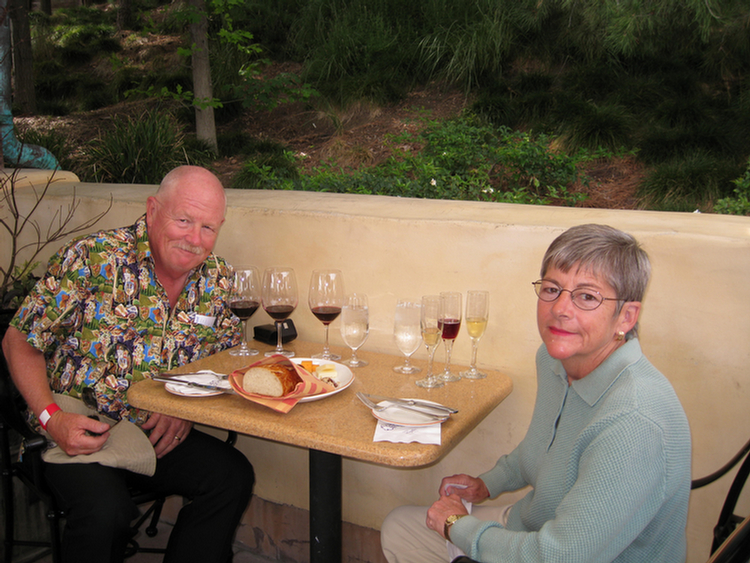
What is this man thinking???
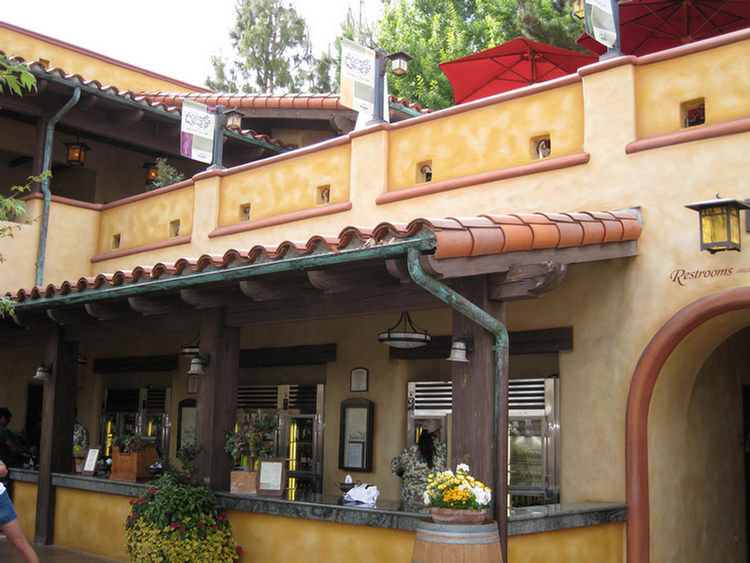
The lounge (where we are) is the upstairs area with the umbrellas
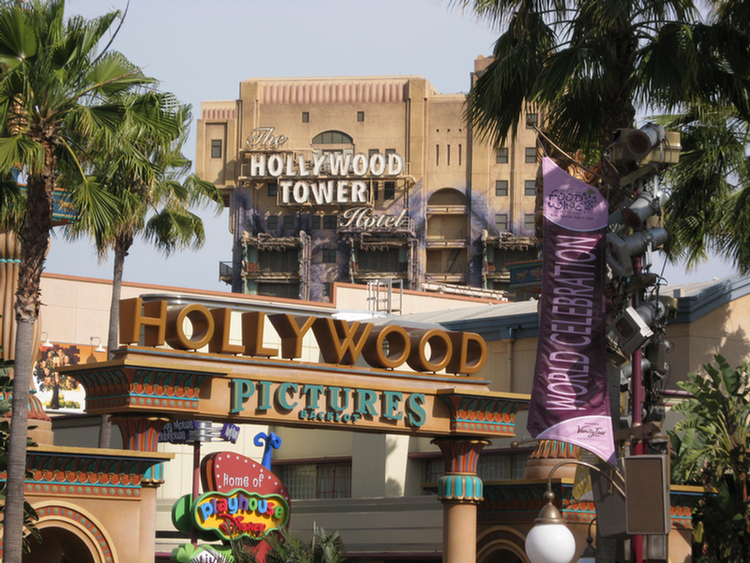
This shot was just waiting for me as we left the park for today.... We
will be back in a few days (Sunday)